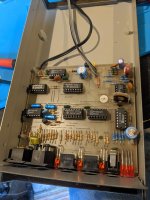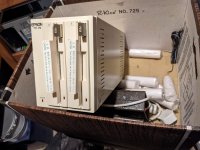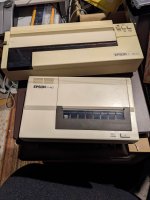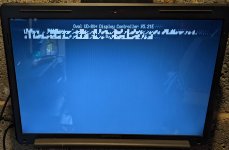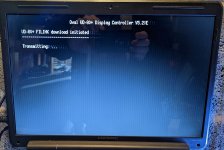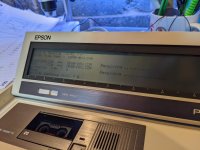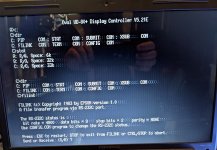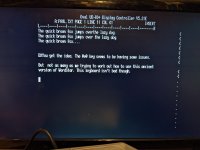Crashedfiesta
Experienced Member
- Joined
- Apr 16, 2022
- Messages
- 165
Hi all, my first post.
I've got an Epson PX-8 which was a donation from one of my work colleagues. He also gave me a couple of boxes that I started to look at today. They are a UD-80 Video Display Controller and a DS-8 Device Switch. I'm focussing on the display controller for now and, after a slightly nerve shredding plug-in and switch on it didn't go "BANG" and actually is outputting something.
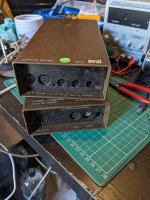
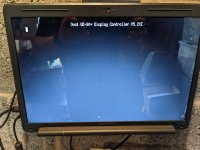
After my initial joy at the thing actually showing something on screen I realised I don't have the right cable to plug between the UD-80 and the PX-8. The box of stuff that came with the PX-8 had what looks like the world's supply of DIN cables but the serial 8 pin DIN to 8 pin mini DIN is not among the pile so it looks like I'll have to make up my own.
This is a real long shot as these things seem to have been exclusive to the UK but does anyone have any idea what the pinout of the serial I/O connector could be on this? Or some advice on figuring it out without blowing it up?
Thanks!
A pic of the inside (I'm a new member so hope these post correctly):

I've got an Epson PX-8 which was a donation from one of my work colleagues. He also gave me a couple of boxes that I started to look at today. They are a UD-80 Video Display Controller and a DS-8 Device Switch. I'm focussing on the display controller for now and, after a slightly nerve shredding plug-in and switch on it didn't go "BANG" and actually is outputting something.


After my initial joy at the thing actually showing something on screen I realised I don't have the right cable to plug between the UD-80 and the PX-8. The box of stuff that came with the PX-8 had what looks like the world's supply of DIN cables but the serial 8 pin DIN to 8 pin mini DIN is not among the pile so it looks like I'll have to make up my own.
This is a real long shot as these things seem to have been exclusive to the UK but does anyone have any idea what the pinout of the serial I/O connector could be on this? Or some advice on figuring it out without blowing it up?
Thanks!
A pic of the inside (I'm a new member so hope these post correctly):


